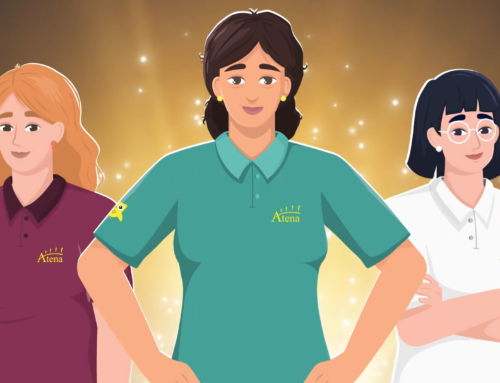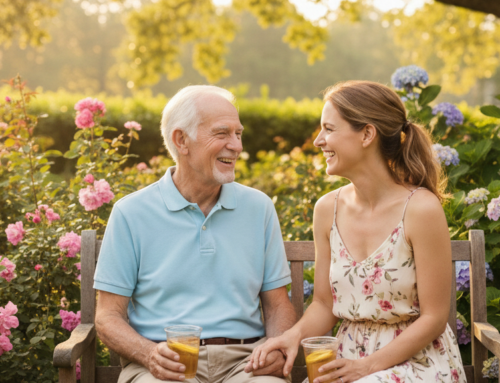Hip arthritis causes pain and stiffness in the hip joint. This condition can complicate everyday activities. It affects many people, especially as they get older. Understanding hip arthritis helps to better manage its symptoms. Regular exercise plays a key role in reducing pain and improving mobility. Today, we’ll talk about how you can help the senior in your care relieve their pain.
The importance of the exercise
Exercise is very important for people with hip arthritis. It strengthens the muscles around the hip joint. Stronger muscles better support the joint and reduce pain. Exercise also improves flexibility and range of motion, making daily activities easier. Here are some examples of what you can do. Always check with a health care professional before starting any exercise program.
Gentle warm-ups
Start with gentle warm-up exercises to prepare your muscles and joints. Warming up increases blood flow and reduces stiffness. Here are some simple exercises:
- Walking on the spot: While standing, alternately lift the knees. Perform this exercise for 2-3 minutes.
- Circling at the hips: Have the person stand with feet shoulder width apart. Move the hips in a circular motion, first clockwise, then counterclockwise. Repeat 10 times on each side.
Strengthening exercises
Strengthening exercises build the muscles around the hip joint, which provide better support. Here are some effective strengthening exercises:
- Bridges: place the senior on his/her back with knees bent and feet flat on the floor. Raise the hips toward the ceiling, hold for a few seconds, and then lower them back down. Repeat 10 to 15 times.
- Leg lifts to the side: Place the senior on one side with legs straight. Raise the top leg as high as possible, hold for a few seconds, and then lower it. Do 10-15 repetitions on each side.
Exercises for flexibility
Flexibility exercises improve range of motion in the hip joint. These exercises help to reduce stiffness and make movement easier:
- Hip Extension Exercise: Senior kneels on one knee with the other leg in front of him, forming a 90-degree angle. Gently push the hips forward, feeling a stretch in the front of the hip joint. Hold for 20-30 seconds and then switch.
- Seated butterfly stretch: Have the senior sit with his or her legs together and knees bent outward. Gently push the knees toward the floor using the elbows. Hold for 20-30 seconds.
Aerobic Exercises
Aerobic exercises improve overall fitness and help maintain a healthy weight, reducing the load on the hip joint. Choose low-impact activities to avoid overexertion:
- Walking: Walking is an easy and effective way to stay active. Start with short walks and gradually increase their length.
- Swimming: swimming is excellent for people with hip arthritis. The water supports your body and reduces pressure on the joints.
Tips for safe exercise
To practice safely and effectively, keep these tips in mind:
- Start slowly: Begin with low-intensity exercise and gradually increase the intensity as the person gets stronger.
- Listen to the body: Stop if the person expresses pain beyond normal muscle pain. Enforcing severe pain can do more harm than good.
- Stay consistent: regular exercise is key. Try to exercise for at least 30 minutes most days of the week.
Conclusion
Pain management for hip arthritis involves regular exercise that strengthens muscles, improves flexibility and boosts overall health. Incorporating these exercises into your daily routine will reduce pain and increase your quality of life. Before starting any new exercise regimen, always check with your doctor to make sure it is safe and appropriate for your condition.
At Atena , we care about the well-being of seniors. We provide individual jobs that match your skills and experience. Our team supports you every step of the way and ensures you find satisfying and manageable work. Contact Atena today and start your journey to a better career!






